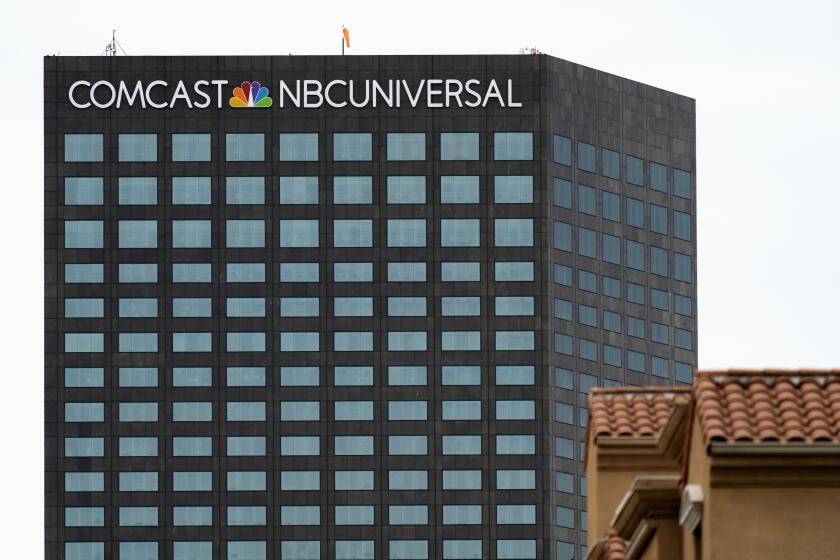Insurance ‘eggheads’ make women pay
When it comes to health insurance, Valencia resident Tova Hack’s first problem is that she works part time and thus needs an individual policy for medical coverage because her employer doesn’t offer one.
Her second problem is that she’s a woman.
Hack, 22, a grad student at Cal State Northridge, is insured by Blue Shield of California. She just found out that the cost of her bare-bones, high-deductible insurance plan is going up 20%, to $119 a month from $99.
But the real surprise -- which Blue Shield neglected to point out in its recent letters to individual policyholders but which was apparent from a close reading of an accompanying chart -- is that men and women will now be charged different rates.
The change takes effect July 1.
“I don’t think it’s fair at all,” said Hack. “I’m in perfectly fine health.”
That may be. But as far as Blue Shield is concerned, Hack and all other women are somehow more accident-prone, or more likely to break a bone, or more susceptible to costly ailments.
Why? Because they’re women.
“Our egghead actuaries crunched the numbers based on all the data we have about healthcare,” explained Tom Epstein, a Blue Shield spokesman. “This is what they found.”
That women get sicker than men?
“It’s all about the statistics,” Epstein said.
It’s not about pregnancy, though. Hack’s policy doesn’t even cover pregnancy and maternity care.
No, this is purely a matter of Blue Shield deciding that women, as a general rule, are more expensive to insure than men.
Perhaps this is partly because women are more likely to seek preventive care, according to the Kaiser Family Foundation. But this should make them better insurance risks. After all, they’re proactively working to stay healthy.
And isn’t that exactly what insurers encourage people to do?
“It doesn’t make any sense,” said Alice Wolfson of United Policyholders, a San Francisco-based advocacy group. “The insurers aren’t assessing risk. They’re assessing how much healthcare is used, even when it’s preventive treatment.”
A spokesman for the California Department of Insurance said there were no regulations preventing gender-based pricing for individual policies.
Vehicle insurers also use gender in determining rates. In their case, though, men often pay more for coverage because they’re viewed as the greater risk. Supposedly guys drive more recklessly and get into more accidents.
Yet men are nevertheless viewed as a lesser medical liability than women, who live longer on average because they tend to eat right, exercise more frequently and take better care of themselves.
Men and women start out as equals in Blue Shield’s eyes. The pricing chart for the insurer’s Balance Plan 1700 -- the plan Hack signed up for -- shows that 18-year-old men and women are both charged $98 a month.
By age 20, women are paying $119 monthly, while men are charged $110.
When they turn 35, women are paying $174 a month compared with the $162 men are paying. By age 45, women are up to $271 a month, while men pay $25 less, or $246.
The gap persists until women and men reach the age of 60. At this point, women are paying $548 a month for insurance, while menfolk see their premium soar to $589.
From 65 onward, just as Medicare is kicking in, women are charged $633 and men are shelling out $681.
None of these rates include dependents.
Epstein couldn’t explain the trend, saying again only that Blue Shield’s “egghead actuaries” concocted the numbers.
But he emphasized that Blue Shield wasn’t the first to come up with gender-specific pricing for individual health insurance. Aetna Inc. apparently introduced the idea to California, followed by Anthem Blue Cross.
“We’ve done it because our competitors are doing it,” Epstein said. “We don’t want to get a disproportionate share of high-risk people.”
By “high-risk people,” what he means is “women.”
And what Epstein is basically saying is that if women are indeed costlier to insure, and if Blue Shield doesn’t price its policies accordingly, more women will want to be insured by Blue Shield.
Can’t have that.
A spokeswoman for Aetna said the company has used gender to set rates since it began offering individual policies in California in 2005. She said the practice reflects “the underlying difference in costs between males and females by age,” which is “well documented by actuarial studies.”
A spokeswoman for Anthem Blue Cross said the company’s individual rates can be affected by “current health status, medical history, age, gender, residence and occupation.” She said gender was added to the mix last year.
A Kaiser Permanente spokesman said the company didn’t differentiate by gender. But he said Kaiser was aware that other insurers were doing it and was keeping an eye on the market.
Blue Shield’s Epstein said gender-specific pricing was being phased in for all of the insurer’s 330,000 individual policies. He also said that although some policies were going up in price, others were holding prices steady but cutting back on benefits.
“Healthcare costs are going up dramatically,” Epstein said. “If you have the same benefits, the rate is going to go up.”
Individual health insurance typically costs more than group coverage because the risks can’t be spread among a large number of people. Such risk pools allow all people with group policies to be insured equally, without biases for age or gender.
Many individual policies come with high deductibles and are intended primarily to cover major problems.
Blue Shield is by no means alone in jacking up rates or cutting benefits for policyholders. Premiums for employer-sponsored insurance plans rose by an average 6.1% last year, according to the Kaiser Family Foundation. The average premium for family coverage ran $12,106, with workers paying $3,281 of that amount.
Premiums for nongroup policies ranged from $1,163 to $5,090 for individuals and $2,325 to $9,201 for families.
But parsing rates according to gender is a relatively new phenomenon. If women are more expensive than men to insure, and middle-aged women are significantly more expensive than middle-aged men, what about, say, older women with red hair? After all, they have fairer skin and thus are more susceptible to skin cancer.
How about if, statistically speaking, blacks are more expensive to insure than whites? Or Christians more expensive to cover than kosher-observing Jews?
How far will insurers go in determining risks?
“That’s a good question,” Epstein replied, although he said it’s “not economical to try” distinctions that go beyond age and gender.
Hack said she’ll be graduating next year and looks forward to landing a full-time job as a teacher.
“Hopefully I’ll be working for a school district,” she said. “I hear they have really good insurance.”
For the moment at least.
--
Consumer Confidential runs Wednesdays and Sundays. Send your tips or feedback to david.lazarus@latimes.com.
More to Read
Inside the business of entertainment
The Wide Shot brings you news, analysis and insights on everything from streaming wars to production — and what it all means for the future.
You may occasionally receive promotional content from the Los Angeles Times.











